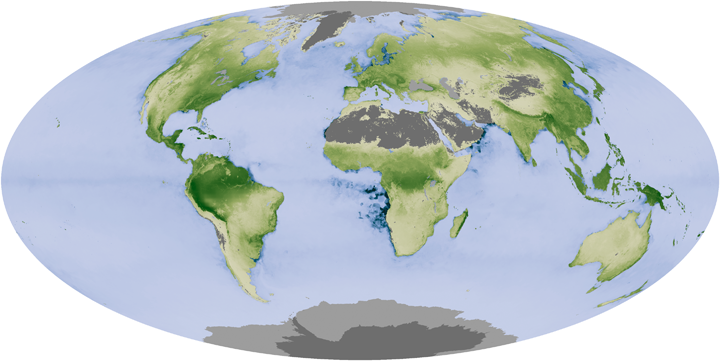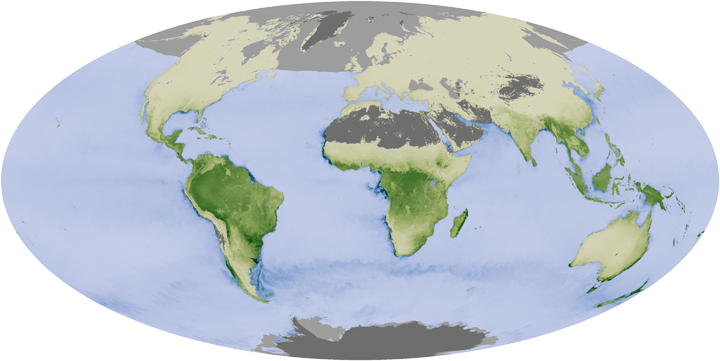How Can the Carbon Stored in Plants Reach the Atmosphere?


Plants breathe. They take carbon dioxide from the temper and turn it into the sugars that go leaves, stems, roots, and woody trunks. What carbon dioxide they don't use, they exhale, releasing the leftover gas with oxygen. And later plants die, they decay, releasing the carbon to the atmosphere. The deviation between the amount of carbon plants absorb and what they release is called net primary productivity. It is a direct measurement of how much institute matter—from crops to forests or ocean phytoplankton—World produces.
The amount of carbon plants shop varies from month to month with the seasons, as shown in these two images. During spring and summer, plants flourish in the warm temperatures and abundant light. Growth drops off in the winter, when common cold and darkness reign.
The acme image shows internet primary productivity in Baronial 2010, when the Northern Hemisphere reached its peak productivity. On land, areas where plants are growing most—and storing the nearly carbon—are dark green. Highly productive areas in the ocean, where the about phytoplankton are growing, are dark blue. Considering the majority of Globe's state is in the Northern Hemisphere, Baronial is also when global net primary productivity reaches a peak.
The lower paradigm shows December 2010, during the Southern Hemisphere's summer and the Northern Hemisphere's wintertime. Globally, plant product is at its everyman during December. This ways that plants are taking less carbon dioxide from the temper in December than in other months, and atmospheric concentrations of carbon dioxide tiptop.
The maps above were made from measurements taken by the Moderate Resolution Imaging Spectroradiometer (MODIS) on the Terra satellite. Such measurements are crucial in helping scientists rail what happens to the carbon people release into the temper by burning fossil fuels, as described in our new carbon cycle article:
Plants on land take taken up approximately 25 percentage of the carbon dioxide that humans have put into the atmosphere. The amount of carbon that plants accept up varies greatly from year to year, merely in general, the earth's plants have increased the amount of carbon dioxide they absorb since 1960.
With more atmospheric carbon dioxide available to convert to plant matter in photosynthesis, plants were able to grow more. This increased growth is referred to as carbon fertilization....There is a limit to how much carbon plants tin can take out of the atmosphere, and that limit varies from region to region. So far, it appears that carbon dioxide fertilization increases plant growth until the found reaches a limit in the amount of water or nitrogen available.
Carbon dioxide also increases temperatures, extending the growing flavour and increasing humidity. Both factors have led to some boosted plant growth. Still, warmer temperatures also stress plants. With a longer, warmer growing season, plants demand more than water to survive. Scientists are already seeing evidence that plants in the Northern Hemisphere slow their growth in the summer because of warm temperatures and h2o shortages.
Read more than in The Carbon Cycle on the Earth Observatory.
NASA Globe Observatory images past Robert Simmon and Reto Stöckli using MODIS data. Explanation by Holli Riebeek.
taylorcortall1997.blogspot.com
Source: https://earthobservatory.nasa.gov/images/51289/a-global-garden-plants-storing-carbon

0 Response to "How Can the Carbon Stored in Plants Reach the Atmosphere?"
Postar um comentário